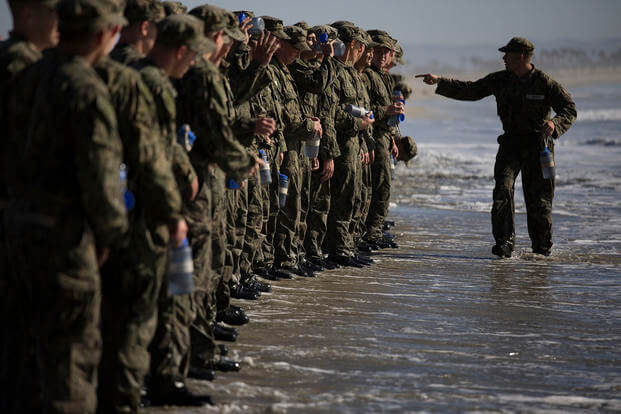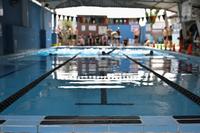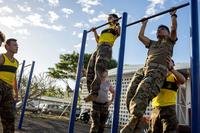Stew --
What specifically did you do to help you physically recover and deal with the pain/soreness at BUD/S? Was it just a combination of Motrin, ice and stretching?
Thanks for the email question. This is a great one that I talk about often, but I realized I never wrote about it. There are many elements to recovery that are crucial to your ability to compete and survive the long months of SEAL training. Here is a list of what I did to prepare, as well as actively aid in my recovery:
First of all, getting ready for BUD/S requires months, if not years (like in my case), of preparation. Playing team sports and working out year-round with running, swimming, calisthenics and some weights as well is, first and foremost, how you can prepare yourself for the long days and nights of SEAL training. See more ideas by checking out my archives.
Second, being 22 years old helped tremendously. Both physically and mentally at that age, I was mature enough to handle the stress and had the natural ability of a late teen or early 20-year-old to recover quickly. As we age, we lose the ability to recover quickly from mental or physical stress.
Third, you have to rest and lick your wounds. Most days are quite normal, and they start at 6 a.m. and end after evening chow at 6 p.m. When you do not have a night training op, get to sleep. Sleep is our number one recovery mechanism. When given the opportunity to get six or more hours of sleep, take it. Weekends are yours to continue to rest and recover. Take a few naps during the weekend after big meals. Try to limit your late nights and eat well -- not junk or fast food -- when away from the BUD/S chow hall.
Fourth, you have to stay hydrated and keep the electrolytes flowing. If you spent the day sweating, breathing hard or wearing wet suits -- on top of running and PT -- you need to be hydrated before, during and after the day. I always made sure I drank a gallon of water a day.
Fifth, that takes me into nutrition. BUD/S chow is actually not that bad. You will eat there three times a day, and I recommend eating as much as you can each time you are there. Most guys at BUD/S actually lose weight, even though they eat 5,000-6,000 calories a day. To aid in the above electrolyte issues, add in sodium-, potassium-, calcium- and magnesium-rich foods. I used to make beans and rice snacks and peanut butter and banana sandwiches for extra calories and salts, as well as carbs and proteins.
Sixth, as far as the pain of the day goes, you have to stretch afterward. I found that a 15-minute static stretch after a long day at BUD/S helped break up some soreness. Then in the next morning before your day gets started, do some dynamic stretching to warm up, like jumping jacks, butt kickers, high kicks and torso twists, for a few minutes.
Now, if I were at BUD/S as a student, I would buy a foam roller and roll out my legs, hips, and back. Pretty much anything that is sore can be rolled out. Key To Relieving Pain from Overuse Injuries
There are many things I did to aid in recovery and many things I wish I had known 20 years ago that would have helped. The foam roller is a godsend to my training. A foam roller can help dissipate a mild case of tendinitis. Sure, Motrin and other anti-inflammatories are OK if you have a problem with an injury but try not to use those too much or too often. Using some omega-3 fish oils or flaxseed oil caplets also will help with inflammation. Or you can eat tuna and nuts, because supplements and vitamins are not allowed at BUD/S. But when in doubt, go to sleep.
Stew Smith is a former Navy SEAL and fitness author certified as a Strength and Conditioning Specialist (CSCS) with the National Strength and Conditioning Association. Visit his Fitness eBook store if you're looking to start a workout program to create a healthy lifestyle. Send your fitness questions to stew@stewsmith.com.
Want to Learn More About Military Life?
Whether you're thinking of joining the military, looking for fitness and basic training tips, or keeping up with military life and benefits, Military.com has you covered. Subscribe to Military.com to have military news, updates and resources delivered directly to your inbox.


















